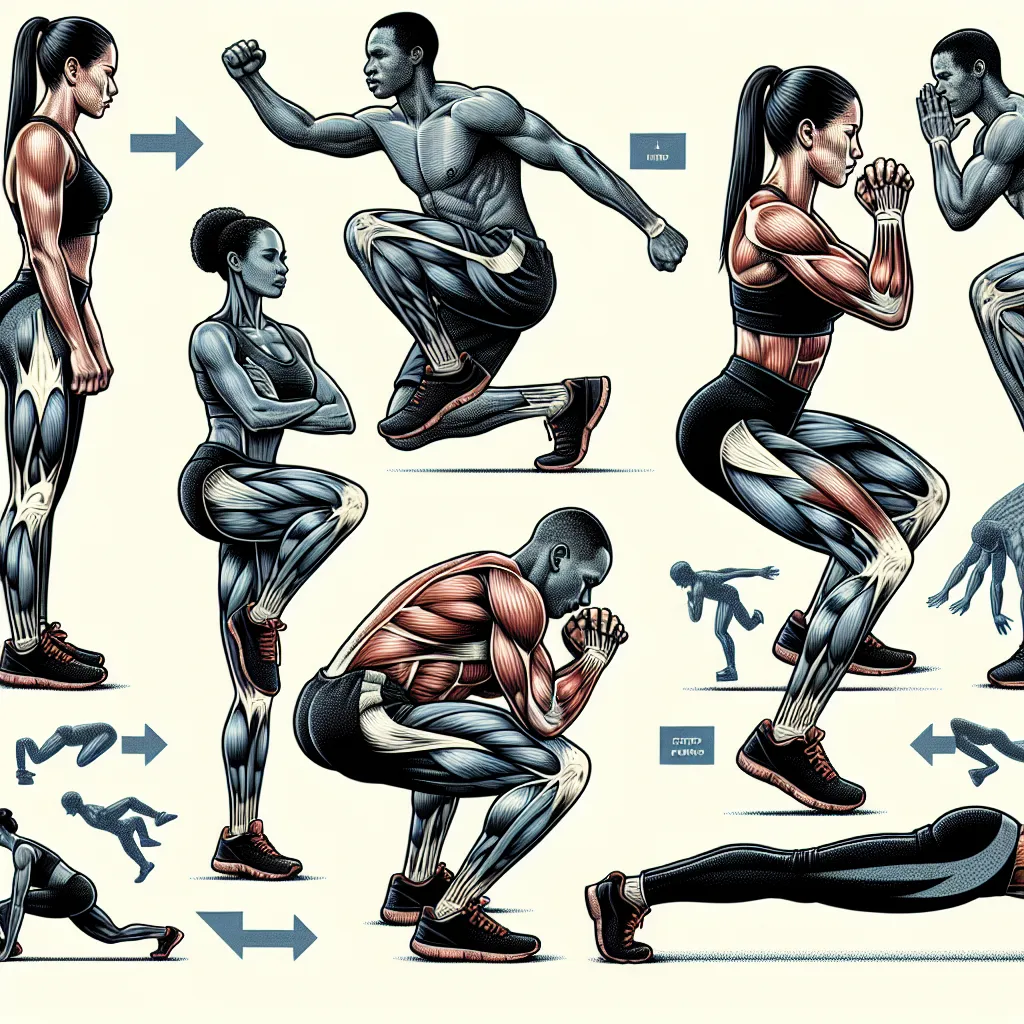Functional movement is a crucial concept in physical fitness and sports science that IELTS test-takers should be familiar with. This article will help you understand, remember, and effectively use this term in your IELTS exam.
Definition and Pronunciation
Functional movement (noun phrase)
/ˈfʌŋkʃənəl ˈmuːvmənt/
Definition: Functional movement refers to exercises or physical activities that mimic real-life motions and engage multiple muscle groups simultaneously, improving overall strength, flexibility, and coordination.
 Functional movement exercises
Functional movement exercises
Context and Usage
Examples in Context
-
Functional movement training has become increasingly popular in gyms worldwide as people seek more practical fitness routines.
Analysis: This sentence introduces the concept as a trending fitness approach, emphasizing its global popularity. -
Athletes incorporate functional movement exercises into their routines to enhance performance in their specific sports.
Analysis: Here, the term is used to highlight its relevance in sports training, showing its practical application. -
Physiotherapists often prescribe functional movement exercises to help patients recover from injuries and improve their daily living activities.
Analysis: This example demonstrates the medical application of functional movement, broadening its context beyond fitness. -
The IELTS Speaking test may include questions about modern fitness trends, where discussing functional movement could showcase your vocabulary knowledge.
Analysis: This sentence directly relates the term to the IELTS exam, providing a practical scenario for its use. -
Many office workers are turning to functional movement workouts to counteract the effects of prolonged sitting.
Analysis: This example applies the concept to everyday life, making it relatable to a wide audience.
Common Contexts
Functional movement is frequently discussed in:
- Fitness and exercise science
- Sports training and athletics
- Physical therapy and rehabilitation
- Workplace wellness programs
- Lifestyle and health magazines
Frequency in IELTS
While not extremely common, ‘functional movement’ may appear in:
- IELTS Reading passages about health, fitness, or sports science (moderate frequency)
- IELTS Listening sections discussing exercise trends or physical therapy (low to moderate frequency)
- IELTS Speaking and Writing tasks related to health and fitness topics (potential use by candidates to demonstrate advanced vocabulary)
Vocabulary Analysis
Word Structure
- Functional (adjective): relating to the way in which something works or operates
- Movement (noun): the act of moving or changing position
Synonyms and Antonyms
Synonyms:
- Practical exercise /ˈpræktɪkəl ˈeksəsaɪz/ (noun phrase): Activities that have real-world applications.
- Natural motion training /ˈnætʃrəl ˈməʊʃən ˈtreɪnɪŋ/ (noun phrase): Exercises that mimic everyday movements.
- Integrated fitness /ˈɪntɪɡreɪtɪd ˈfɪtnəs/ (noun phrase): A holistic approach to physical conditioning.
Antonyms:
- Isolated exercise /ˈaɪsəleɪtɪd ˈeksəsaɪz/ (noun phrase): Exercises that focus on a single muscle or muscle group.
- Static training /ˈstætɪk ˈtreɪnɪŋ/ (noun phrase): Exercises performed without movement.
Memory Techniques
Mind Map
Create a mind map with ‘Functional Movement’ at the center, branching out to:
- Types of exercises (squats, lunges, push-ups)
- Benefits (improved coordination, better posture, increased strength)
- Applications (sports, daily life, rehabilitation)
- Related concepts (core stability, balance, flexibility)
Visualization Technique
Imagine yourself performing a functional movement exercise, such as picking up a heavy grocery bag. Visualize the multiple muscle groups engaging simultaneously, from your legs to your core and arms. This real-life scenario helps cement the concept of functional movement in your memory.
Practice Exercises
-
Write a paragraph describing the benefits of functional movement for office workers. Use at least three related terms from the mind map.
-
Create five sentences using ‘functional movement’ in different contexts, such as sports, physical therapy, and fitness trends.
-
For IELTS Speaking practice, record yourself discussing the advantages and disadvantages of functional movement training compared to traditional gym workouts.
Conclusion
Understanding and effectively using the term ‘functional movement’ can significantly enhance your IELTS performance, particularly in tasks related to health and fitness. Remember to practice using this term in various contexts to solidify your understanding and improve your ability to use it naturally in the exam.
We encourage you to share your experiences with learning this term or ask any questions you may have about functional movement in the comments section below. Keep practicing, and good luck with your IELTS preparation!


